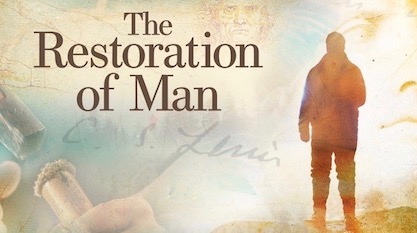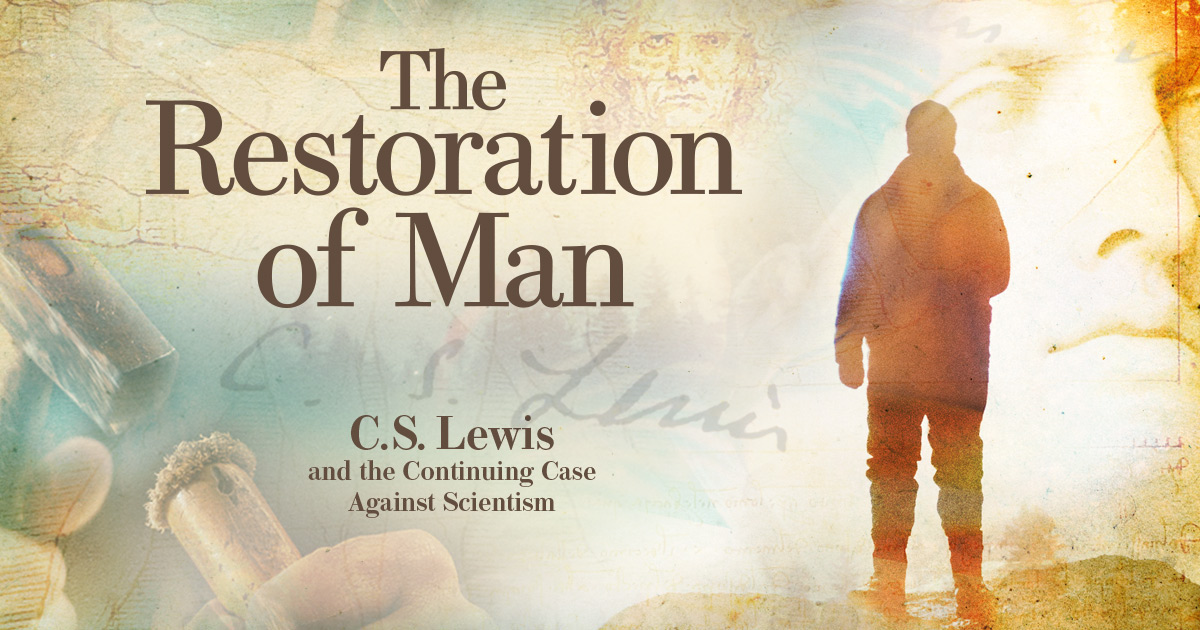 Faith & Science
Faith & Science
From National Review, a Rave for Aeschliman on the “Religion of Science”


The new book from Discovery Institute Press is an updated, expanded reissue of the classic by Michael Aeschliman, The Restoration of Man: C. S. Lewis and the Continuing Case against Scientism. Aeschliman gets a fantastic review in the current issue of National Review. Christopher Blum concludes “The Restoration of Man is a book marked by tremendous learning worn lightly, deployed vigorously, and offered generously to a generation that has forgotten how to think because it has lost its grip on the meaning of words.”
“A generation that has forgotten how to think,” but also forgotten how to write. In the review, Blum aptly quotes C.S. Lewis, “Any fool can write learned language. The vernacular is the real test.” Isn’t that the truth. But toward what end? Blum: “Aeschliman’s target is the regrettable tendency of scientism — the ideology that exaggerates the role of empirical science in forming our view of the world — to ‘destroy the vision of man as imago Dei by picturing and perceiving him instead as a creature driven and primarily determined by laws of matter and force.’”
Why a reissue of Aeschliman’s book? Because the myth that science tells us all we need to know is even more influential today than when Professor Aeschliman wrote it in 1983. And why the need for an explication of Lewis, who explains himself perfectly well? Aeschliman’s aim wasn’t to make C.S. Lewis’s non-fiction work against scientism, a bankrupt modern idea, more accessible and lively. Lewis’s work in that area is already quite accessible and lively. Aeschliman’s purpose instead is to defend Lewis before intellectuals who overlook the latter’s philosophical contributions precisely because he is so lucid, so accessible.
All Tied Up with Language
If Lewis as a writer had been pompous and swollen, he wouldn’t have been C.S. Lewis. On the other hand, he might have won the regard of more Officially Smart People, as Jay Richards calls them.
From “C. S. Lewis and the Religion of Science”:
[T]he vernacular is the test because it is in the vernacular that the battle lines have been drawn. This has been known by the wise for some time. It was over 20 years ago that Pope John Paul II identified the contemporary “crisis of truth” as a “crisis of concepts” and asked, “Do the words ‘love,’ ‘freedom,’ ‘sincere gift,’ and even ‘person’ and ‘rights of the person,’ really convey their essential meaning?” It should be plain that all of them are currently matters of debate, with the first of his list seemingly on everyone’s lips but only questionably in everyone’s heart.
From whom are we to learn how to speak again? From the “great central tradition” of classical and Christian civilization which is Aeschliman’s second great concern in The Restoration of Man. While he chronicles the spread of scientism since the Enlightenment, he also tells the tale of those who have opposed it every step of the way, from Pascal and Swift in the early years, to Newman and Dostoevsky in the 19th century, to Chesterton, Lewis, and Solzhenitsyn in more recent decades. These were the writers and witnesses who strove to “revive, nourish, and protect the common human reason against specialists and fanatics who would reduce it to sense perception only.” They were the prophets who insisted that science “depends upon philosophy for the validity of its terms and procedures and to guide the uses to which scientific knowledge will be put.” And they were the true philanthropists, who sought to nourish the souls of men and women with something more substantial than what engineers can produce. They wrote satires, poetry, novels, biographies, essays, and even plays, because they knew that “some more popular form than rational argument” would be “necessary to counteract scientific materialism’s more immediately tangible and visible appeals.”
By placing C. S. Lewis within this great tradition, Michael Aeschliman has reminded us that if we would regain our purchase on the true meaning of words, we must have recourse to the very fonts of wisdom, in the works of Augustine and Aristotle, Jane Austen and the Psalms, St. Paul and soon-to-be-saint John Henry Newman.
As Blum notes, the problem of science worship is tied up with how the culture encourages us to express ourselves. Arguably, the full name of a popular website — “I F****** Love Science!” — captures this in a nutshell. Or read the blog of prominent evolutionist and ID critic P.Z. Myers, a man of mature years, who promises “random biological ejaculations from a godless liberal.” That’s among many other illustrations I could cite. (And I apologize that you are not going to be able to un-read the juvenile punning in that self-description of Professor Myers’s work.)
By defacing the image of man, scientism helps to vulgarize the culture — yes, it affects us all — and turns students and adults alike away from that “great central tradition.” Restoring man’s image is functionally equivalent to restoring the tradition of great thought and great writing.
“Brief, Brazen, Brilliant”
As the book’s description puts it, “Aeschliman shows why Lewis’s case for the human person as more than matter — as a creature with inherent rationality and worth — is a precious resource for restoring and preserving our culture’s sanity, wisdom, and moral order.”
This third edition of The Restoration of Man includes a brand new Foreword by James Le Fanu, as well as the Forewords to the second edition, by George Gilder (1998), and the first edition, by Malcolm Muggeridge (1983). The book when it was first published was hailed by Russell Kirk as “One of the most perceptive books on C. S. Lewis,” and “A succinct, strong book, worthy of Lewis himself.” That’s quite an endorsement from one of the great souls of the past century. Our own George Gilder calls it “brief, brazen, brilliant.”
Congratulations to Dr. Aeschliman! If you’re not acquainted with his work, you can take this opportunity to get acquainted now.
